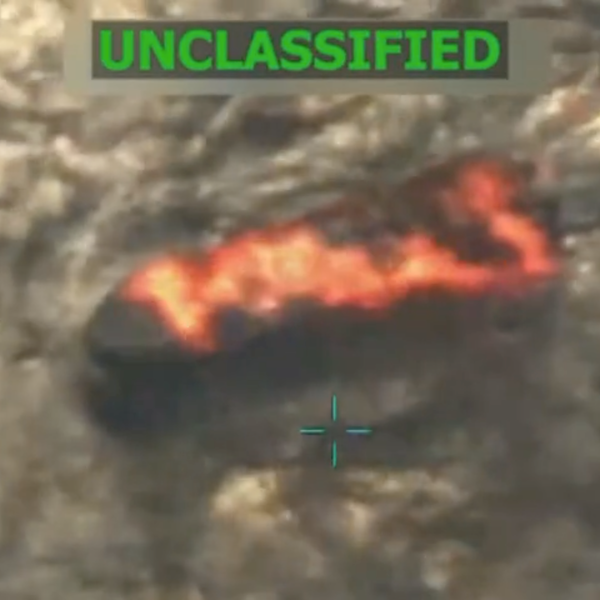The Pentagon failed its sixth audit in a row last month.
And “failed” is putting it generously. The department actually received a “disclaimer of opinion.” According to the Government Accountability Office, that means “auditors were unable to obtain sufficient, appropriate evidence to provide a basis for an audit opinion.” So the outcome is more like an “incomplete” than an abject failure.
But semantics aside, one major reason the Pentagon keeps failing audits is because it can’t keep track of its property. Last year, the Pentagon couldn’t properly account for a whopping 61% of its $3.5 trillion in assets. That figure increased this year, with the department insufficiently documenting 63% of its now $3.8 trillion in assets. Military contractors possess many of these assets, but to an extent unbeknownst to the Pentagon.
The GAO has flagged this issue for the department since at least 1981. Yet the latest audit states that the Pentagon’s target to correct insufficient accounting department-wide is fiscal year 2031. In the meantime, contractors are producing weapon systems and spare parts that they may already possess — an incredible waste of taxpayer dollars.
The F-35 program is a great example. The Pentagon technically owns the global pool of spare parts for all variations of the F-35, but the program’s contractors — mainly Lockheed Martin and Pratt & Whitney — manage those parts. According to the GAO, the Pentagon relies on contractors to record the “cost, total quantity, and locations of [F-35] spare parts in the global spares pool.” The department has estimated that the value of F-35 parts in the possession of contractors is over $220 billion, but the GAO reports that this is “likely significantly understated.”
The Pentagon doesn’t know what or how much government property contractors have because it doesn’t have access to contractor records. Lockheed Martin has even threatened to charge the Pentagon for reports on what and how many F-35 parts the government owns, but Lockheed possesses. A few years ago, the corporation estimated that it would take 450,000 labor hours to produce these reports — making them too expensive for even the Pentagon, which appears to have trusted this estimate. Congress authorized procurement funding for 90 F-35s that year, 11 more than the Pentagon requested.
Last year, the Department of Defense Office of the Inspector General noted that the Pentagon’s inability to keep track of its property could lead it to “understate its property held by contractors and potentially buy more than it needs.” In September, Inspector General Robert Storch reported that in 2021, the Army’s spare parts forecasting was only 20% accurate on average. As a result, the Army overstated how many spare parts it needed by $202 million, in addition to spending another $148 million on spare parts it didn’t anticipate needing at all. The other military services didn’t do any better, overshooting their spare parts needs by $767 million and spending $355 million on parts they didn’t know they needed. All in all, the military overshot its spare parts needs by nearly $1 billion. It spent over half a billion on spare parts it didn’t forecast.
The Pentagon could save hundreds of millions of dollars, if not more, by properly accounting for its assets. In a rare win for taxpayers, the department realized some of these savings in 2019, when the Department of Defense Inspector General flagged errors in the Navy’s property and inventory records. In an effort to resolve those errors, the Navy located a warehouse that was mysteriously absent from its property records. Inside the warehouse, the Navy found $126 million worth of spare parts for P-8 Poseidon, the P-3 Orion, and the F-14 Tomcat — the latter of which the Navy retired in 2006 (over a decade previous). Thankfully, the other parts were still useful and the Navy filled over $20 million in spare parts orders without having to procure new ones. These savings are too scarce.
Last year, Congress allocated at least $39.5 billion to procure aircrafts, their spare parts, and other equipment, despite not knowing what the government already owned. But insufficient tracking of inventory property doesn’t just increase the risk of overbuying spare parts, it also inhibits the Pentagon from maintaining government property in the possession of contractors. In May, the GAO revealed that in the past five years, Lockheed Martin has lost, damaged, or destroyed over a million spare parts for the F-35 worth over $85 million. The government had visibility into less than 2% of those losses, since it relies on Lockheed to voluntarily report not only what and how much government property it possesses, but also the condition of that property.
The Pentagon clearly has a lot of work to do to properly track its property and produce auditable financial statements. It has no idea what equipment it already owns, so it can’t maintain its property or anticipate what more it needs. The department is spending taxpayer money recklessly. But taxpayers cannot wait until 2031 for the Pentagon to correct its decades-old inventory problem.
- Pentagon fails sixth audit in a row ›
- Congress stuffs $25 Billion into Pentagon contractor stockings - Responsible Statecraft ›
- DoD finds another $2B accounting 'error' to boost Ukraine aid | Responsible Statecraft ›
- GOP leader mulls higher taxes to fight multi-theater war | Responsible Statecraft ›
- Popular YouTuber discovers how corrupt the Pentagon budget is | Responsible Statecraft ›
- Pentagon fails 7th audit in a row | Responsible Statecraft ›
- Report: Pentagon will likely fail audits through 2028 | Responsible Statecraft ›
- DOD grip on keeping wasted, empty properties for money is 'out of hand' | Responsible Statecraft ›
- Big, Beautiful trillion dollar war budget! | Responsible Statecraft ›















